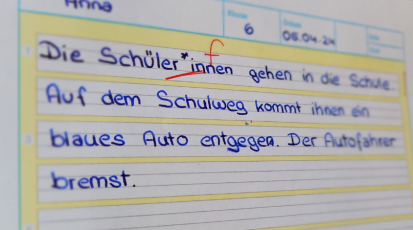“They have to go”

Trump made no secret of his opinion on immigration. In 2015, he famously dismissed many Mexican border-crossers by saying “they're bringing drugs, they're bringing crime, they're rapists'' (Source: The Washington Post), a quote that definitely set the tone for not only his election campaign but his entire presidency. With immigration being a major focus throughout his term in office he made many promises such as “immediately terminat[ing] presidents Obama's illegal executive order on immigration” (Source: c-span). This order included offering contingent deportation relief to some immigrants, extending visas to high skilled workers, and increasing border security. Today, four years later, this historically unpopular president’s term (Source: FiveThirtyEight) is over. So, how have Trump's policy changes affected immigration in the US? Keeping in mind that he was known for spreading false information and lies, did he actually fulfil his promises?
To better understand immigration policy, it's very important to have a clear definition of the official meanings of relevant terms.
A refugee is a person who is unable or unwilling to return to his or her home country because of a well-founded fear of persecution due to race, membership in a particular social group, political opinion, religion, or national origin.
An immigrant is any legal alien in the United States other than non-immigrants, students and temporary visitors for pleasure. Aliens are granted conditional entry into the United States, and certain battered alien spouses and children.
Non-immigrants are allowed to enter the United States for a specific purpose and for a limited period of time. For instance, tourists, business visitors, or seasonal agricultural workers.
Unauthorized immigrants are illegal aliens or undocumented workers. They entered the United States without official authorization.
Source: https://www.ncsl.org/research/immigration/common-immigration-terms.aspx
Legal immigration
During his time in office, former President Donald Trump made many claims about immigration and his approach to solving this issue. From Trump's point of view, illegal as well as legal immigration is a threat to the United States economy and security. Compared to former Presidents, Trump's stance was more hostile and he stayed consistent with his position on legal immigration: He wanted to eliminate it. For the last four years the Trump administration tried to do exactly that. At the same time, he made many contradictory claims supporting more legal immigration, for example, in 2015 he said “I want legal immigration. I want great people to come in.” (Source: Factba). This contradicts everything his administration did in terms of immigration. Taking a closer look at Trump's policies clearly shows he tried to make it almost impossible for people wishing to enter the country temporarily or permanently.
Permanent residents
For immigrants there are four ways to become a legal American resident. You can obtain a green card through a family relationship, employment sponsorship, humanitarian protection (refugees and asylees), and the Diversity Visa lottery, better known as the green-card lottery. Only then can you apply to become a US citizen.
In 2019, one million immigrants became lawful permanent residents (LPRs). This number decreased by 64,800 from the year prior (Figure 1). There has been an overall decline in new green-card recipients in recent years. For example, 2019 had the lowest number of recipients in half a decade, compared to the roughly 1.2 million LPRs in 2016, the last year of the Obama administration. This is due to the Trump administration's attempt to dramatically reduce the entire legal immigration system.
Refugees and Asylees
Trump’s administration proposed and implemented many policies surrounding refugees, immigration, and a travel ban for majority-Muslim countries. One of his plans was to halve the total number of refugees accepted into the country to 50,000 per year. In his first year in office, the administration's policies managed to drop the refugee admissions from nearly 84,000 to 53,000. In 2018, reduced this number again to about 22,000 admitted refugees (Figure 2). A historically low number not seen since 1980. But how was this possible?
In January 2017, he kicked off his presidency with the controversial Muslim ban, an executive order banning travel from several mostly Muslim countries. This action would not only affect tourism, but also people fleeing violence and seeking asylum. Since then the proportion of Muslim refugees has fallen drastically, which of course influences the overall numbers. Although the first and second iterations of the Muslim ban were struck down by federal judges, the court decided that the third version was appropriate and could be implemented.
In March 2017 a new executive order followed. Trump banned all refugees for 120 days unless they were already scheduled for travel. This was supposed to prevent any exploitation by terrorists and give Homeland Security time to review the application process. Half a year later he allowed refugees from all but 11 countries, including Iraq, Iran, Syria, and Sudan. In 2018 Trump intensified the screening process for refugees, making it more rigorous, which explains the extremely low number of refugees during this time. This action particularly affected Mexican asylum seekers. Trump ordered that Mexican refugees be returned to Mexico while waiting for the outcome of their hearings. This forced them to live in dangerous conditions without knowing when or if they would be granted asylum or help.
Non-immigrants
Another important figure to consider is the number of non-immigrant visas issued in the United States. To be more exact, these are people traveling to the US for example as international students or temporary workers. The data excludes tourists and other short-term visitors who could be allowed to enter through the Visa Waiver Program, or people staying less than 90 days.
In 2020, the annual number of non-immigrant visas issued by the U.S. State Department fell to around four million – a 54 percent decline from the 8.7 million issued in 2019 (Figure 3). This is compared to 2015, where nearly 11 million temporary visas were issued – a record high since the year 2000. Reasons for this decline may have been due to the COVID-19 pandemic in 2020 and some of the Trump's administration's executive orders and policies, such as the “Muslim ban”. Another reason could have been the overall social climate in the US during the Trump era and his administration's harsh opinion on immigration.
Illegal immigration
Another interesting find during our research was a commercial that aired during Trump's re-election campaign last year. The commercial included the claim that Trump had “cut illegal immigration in half” (Source: Politifact). This was untrue. According to the Department of Homeland Security’s statistics, when Trump took office in 2017, he inherited Obama's low numbers for “illegal entry” – numbers not seen since the 1970s.
To be more precise, in 2019 there were approximately 850,000 apprehensions in ports of entry compared to 303,916 in 2017, a 280 percent increase (Figure 4). The increase in apprehensions has come as a growing number of migrants seek asylum.
Given the fact that immigration was one of Trump's top priorities and a basis for many campaign promises, it's interesting to note that he used false claims to hide the fact that his immigration policy did not improve the number of illegal entries.
Trump's impact on immigration
If we let the data speak for itself, we can make a better assessment on this topic, without discussing the ethical basis of many of Trump’s actions. By making the already difficult path into the United States even more strict, it comes as no surprise that the number of immigrants and refugees decreased during his term in office. He made it harder for all immigrants to get a permanent and temporary visa or to seek asylum in the US. The number of refugees even reached an all-time low in 2018.
Many of Trump's immigration policies could not be carried out as he had hoped. For example, he promised to immediately terminate all programs that defer deportation for some immigrants – this did not happen. Not to mention the wall to Mexico, another one of Trump's semi-successful immigration policies. Illegal immigration has not been reduced and in fact due to his many policies mentioned above, more people are struggling to enter the US legally. Could these restrictions have led to the rising number in illegal entries and deportations?
In summary, the Supreme Court rejected many of his attempts to curb immigration, whether it was to end several programs, ban Muslims from visiting the US, or the use of military funds to pay for the wall to Mexico. Overall Trump was successful in drastically changing the US immigration policy. But if we look to the decisions of the Supreme Court as a moral compass, his policies crossed a moral line several times. This is especially interesting, considering that Trump is the first president in history going through a second impeachment trial.
















